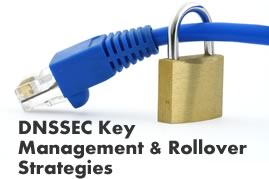Another milestone for DNSSEC has been reached, with VeriSign today announcing it has deployed DNS Security Extensions (DNSSEC) in the .net zone. The largest zone to be DNSSEC enabled to date, .net domains currently number more than 13 million registrations worldwide. 
Having DNSSEC enabled for .net domains isn’t only important due to the number of .net domains in use, it’s important as it represents one of the most critical implementations of DNSSEC technology, since .net serves as the underpinning for many critical Internet functions.
DNSSEC is designed to protect the Domain Name System from authentication exploits, primarily cache poisoning which can allow internet requests to be intercepted, allowing an attacker to access a website, e-mail, or other services, and redirect or spy on the users without their knowledge.
“VeriSign’s roll-out of DNSSEC is on schedule with the signing of .net in 2010. The DNS data associated with .net registrations will be protected from many hackers and identity thieves trying to redirect users’ queries to malicious sites through cache poisoning,” said Raynor Dahlquist, Senior Vice President and General Manager of Naming Services at VeriSign. “There is, however, more work to be done, as ISPs, browser vendors, registrars and other members of the DNS ecosystem confirm that their solutions and services are ready for DNSSEC enablement. We’ll continue to work with all of those parties to shepherd a stable deployment of DNSSEC, particularly as we prepare to sign the .com zone in Q1 2011.”
Rod Rasmussen, CTO at Internet Identity and a SecurityWeek contributor, also agrees that there is more work to be done, and cautions on the many things to consider when deploying DNSSEC. “There has been a lot of recent buzz surrounding implementation of Domain Name System Security extensions. Yet massive industry-wide confusion, continued lack of awareness for DNSSEC outside the DNS industry, a plethora of DNSSEC verification techniques and standards, and arguments over which to use, tell a different story,” Rasmussen writes.
DNSSEC applies digital signatures to DNS data to authenticate the data’s origin and verify its integrity as it moves throughout the Internet. The security extensions are designed to protect the DNS from attacks intended to redirect queries to malicious sites by corrupting DNS data stored on recursive servers. The successful implementation of DNSSEC will greatly reduce a hacker’s ability to manipulate DNS data. The resulting digital signatures on that DNS data are validated through a “chain of trust.”
Earlier this month, VeriSign launched a cloud based service to ease the implementation of DNSSEC for registrars to help them incorporate signing and provisioning into their infrastructure.
The next big milestone is expected to be reach sometime in the first quarter of 2011, when VeriSign expects to sign .com.
Related Reading: Do Recent BGP Anomalies Shed a Light on What’s to Come?
Related Reading: Trouble Ahead – The Implementation Challenges for DNSSEC
Related Reading: Deploying DNSSEC – Four Ways to Prepare Your Enterprise for DNSSEC
Related Reading: Five Strategies for Flawless DNSSEC Key Management and Rollover
Related Reading: The Missing Ingredients for DNSSEC Success















